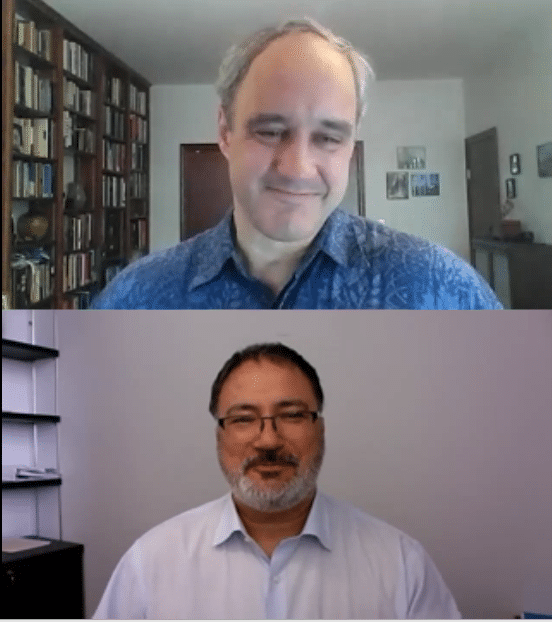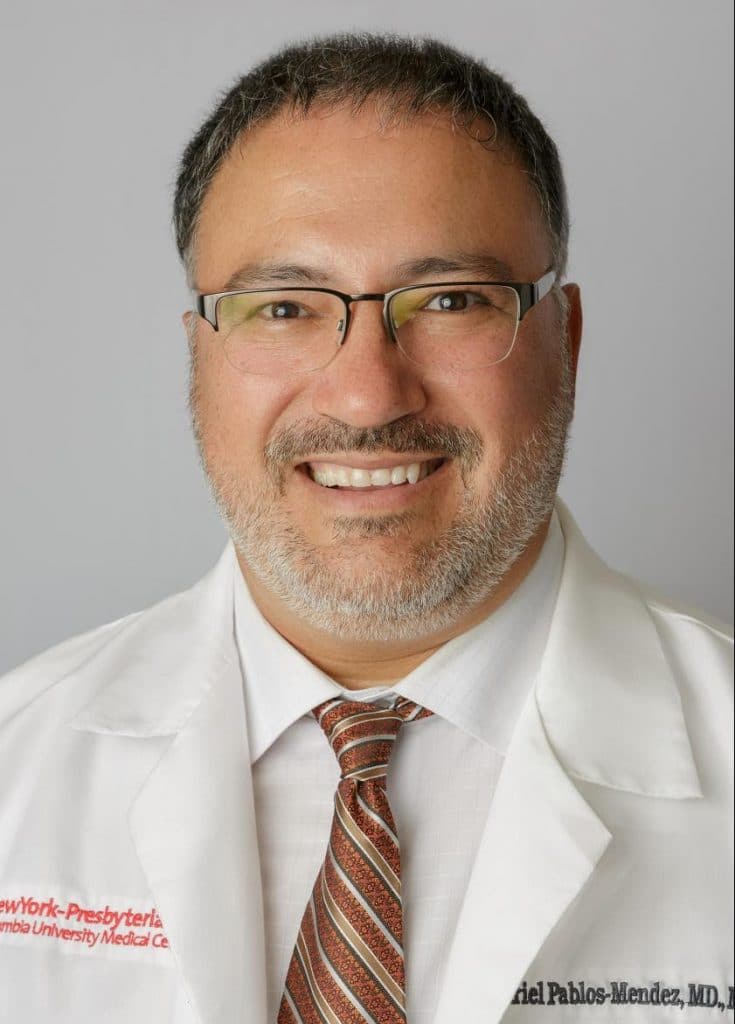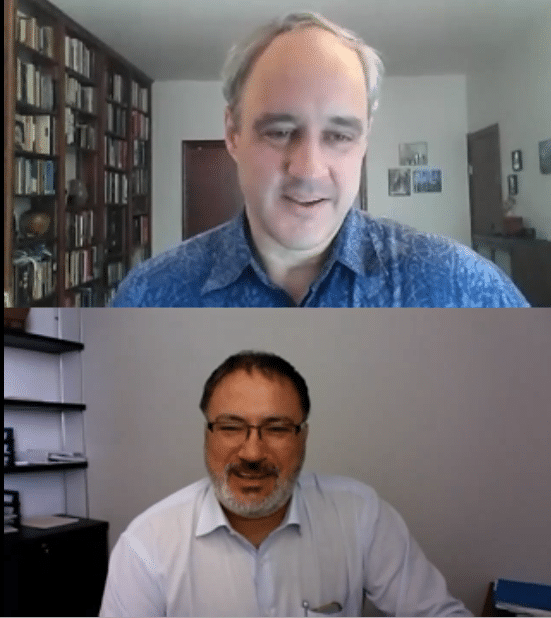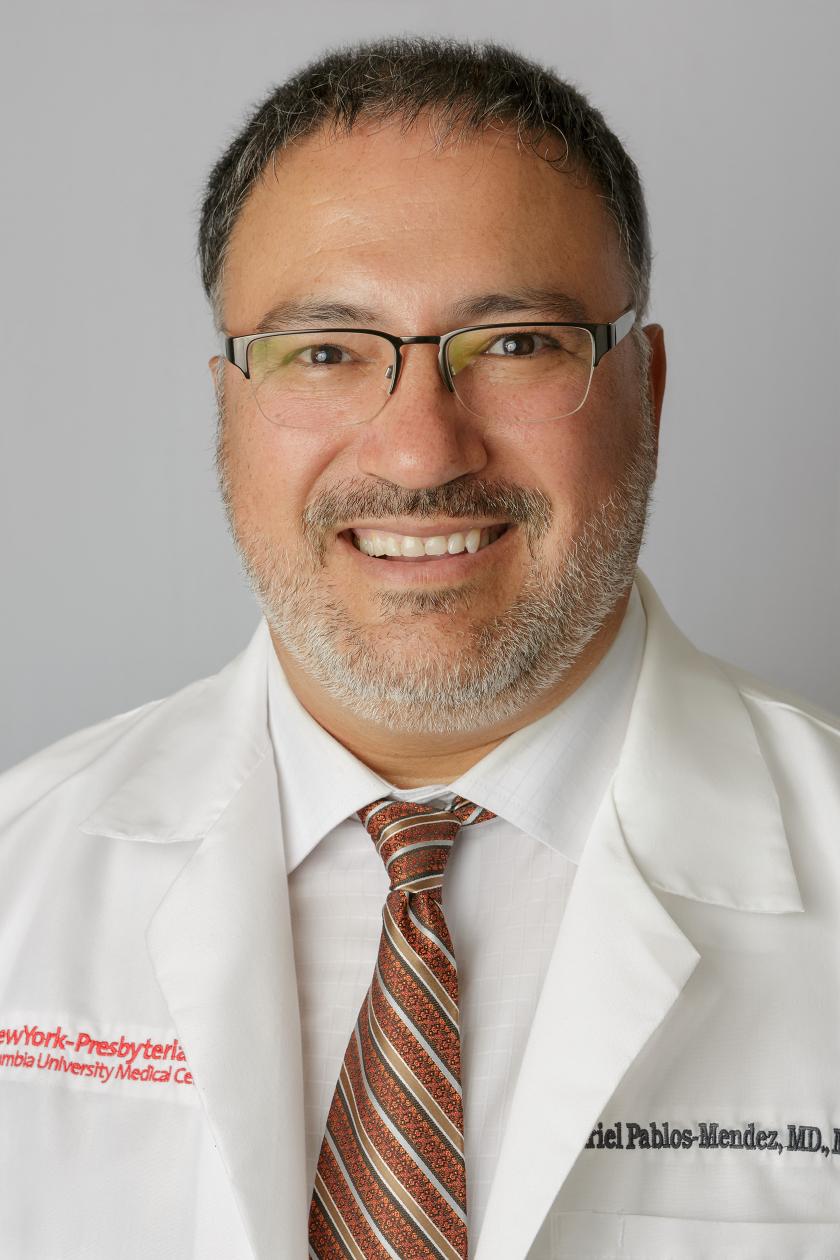A noted figure in the global health community, Ariel Pablos-Méndez led USAID’s health programming during the 2014–2016 Ebola crisis as assistant administrator for global health, and he has been on the frontlines of the COVID-19 response while practicing at a New York City hospital, Columbia University Medical Center. He currently serves as a JCIE/USA board member, and he spoke with JCIE/USA Executive Director Jim Gannon on June 12, 2020, about lessons from the current pandemic and what type of international coordination is needed.
Jim Gannon: You worked on health policy for several decades, but now you are back on the clinical side. What surprised you about what you saw working in the hospital in New York City during the COVID-19 response?
Ariel Pablos-Méndez: Several things. Clearly this pandemic is a “hyperacute epidemic.” You’ve been hearing about the R-0, or the “reproductive number”—how many [people] you can give it to—which was estimated to be around 2.0–2.3 or so. Tuberculosis has a similar reproductive number; an active case can create two other active cases; but that happens over two to three years, whereas with COVID, it happens over one or two weeks. So the same number is explosive in an acute viral epidemic—unless you catch it and contain it very early, the numbers grow exponentially, and suddenly it’s out of control.
This is what we lived through in New York. Our ICUs were overwhelmed. As panic took hold, we went into lockdown. The streets were eerily empty, and some people were sending videos and saying, “There are no lines in the hospitals,” “There are no people falling dead on the sidewalks like in Wuhan.” But for the ICUs, it was a nightmare. My colleagues who work in the ICU were seeing a hellish nightmare of people dying right and left, especially the elderly or those with comorbidities. Bodies were piling up in the doctor’s lounge because the morgues were already overflowing. You saw freezer trailers for storing bodies at some hospitals that would come at night to avoid more panic.
Second, COVID is an “iceberg epidemic.” It is an iceberg because we only see what is above the surface, a minority of confirmed cases, the sickest. But actually, there is a large number of patients below the surface. We know that a large proportion of infected people are asymptomatic, or mildly symptomatic. We were not even testing the iceberg we could see; we were just scraping the “icicles” at the tip. There were many mildly to moderately symptomatic people we turned away and sent home, saying, “Stay isolated, take some Tylenol.” That’s all we could do. And we knew that even when you are asymptomatic you still transmit. The traditional 19th-century approach to dealing with outbreaks, which is case investigation and contact tracing,
could not work beyond the early stages. In some places that are under control, it might be okay, but once you are already in the exponential phase of epidemic, it does not do much. In New York, contact tracing was officially discontinued early in April. It could be useful again once the tide is turned.
The third characteristic of this pandemic is that this is an age-bifurcated epidemic. COVID-19 does not kill children—you can count those who have died on the fingers of your hand, and many of them had leukemia or some other underlying condition. Everybody can be affected, but the deaths are really among the elderly and the sick. We now know that over 40 percent of fatal cases in the United States have occurred in the 2 percent of the population that resides in long- term care and nursing homes.
Gannon: What helped?
Pablos-Méndez: We got help from other states. A hyperacute epidemic really hits you, then it moves on. People isolate themselves, the virus goes down, immunity grows, and the virus moves to the next location. After New York, the epidemic peaked in New Jersey, and now Texas, and so on. People from California and others could come and help us in New York, and now we can share our machines for ICUs with New Jersey. New York Governor Cuomo has been exemplary in crisis management. So, there’s room here to help different geographies as it rolls out and that’s going to be the case whether in America or Africa.
Also, we created a cough and fever clinic so that patients would not overwhelm the emergency room and also not spread the virus among themselves. I was a volunteer there, and a lot of people came to our clinic who had COVID. Clinically they had COVID, but we did not have testing capability. It was a shame that in New York City we couldn’t do outpatient testing early on. The available tests were reserved for the sickest people being admitted to the hospital. More testing would have helped, but the country was clearly not prepared for the storm when it reached our shores. Even more delayed were serology tests that are helping ascertain degrees of immunity among individuals and the community, which contributes to a further reduction in contagion.

Gannon: What about Japan?
Pablos-Méndez: I still don’t know how Japan is being so successful. It helps that it is an island because having an elderly population makes it very vulnerable to high mortality. In fact, part of the success of South Korea, when you compare with Italy, is that in Italy 25 percent of the population is over 65, whereas in South Korea, it’s only 14 percent. So you expect fewer deaths. But in Japan, you have probably 30 percent of the population over 65, and I would have expected scores of deaths. But they did something right there. Maybe the nursing homes are better taken care of, because here we have many nursing homes that are not well-managed.
Gannon: Has what you have seen changed your opinion on what makes health systems more resilient and sustainable?
Pablos-Méndez: No system has been able to contain this (with islands being an exception). It’s not like we have the perfect system anywhere. We learned a lesson with Ebola, not only about the weakness of the health system in Western Africa, but actually about the strength of Uganda’s primary care. In Uganda, primary care proved to be very important with the Ebola response, so that we could have early detection. Because of primary care, people knew how to report cases, they could follow instructions, and they have the trust of the community. One of the worst things we have had here is a lack of trust and leadership. Clearly the White House has not enjoyed any trust because it has not been focused on evidence or data or testing. And the WHO itself, even before Trump’s attacks, had not been at its best given the magnitude of the challenge.
My colleagues at USAID who manage pandemic response in the US government were telling me that they had done so many scenario-planning exercises, with every variable you can imagine. But in all models, we never, never, never considered that there would be no leadership. You need a good primary care system with good leadership. Health system leadership and governance is part of the health system, and the greatest failure this time has been that of leadership and the lack of data.
Also, we locked down everything quickly, without thinking that the social determinants of health also matter to the health system. Having a job, having an economy, having food on the table matters as much as having a doctor. Clearly, we miscalculated that. My grandmother in Mexico used to say that in the 1918 epidemic, hunger killed more people than the virus. And we also know that the 2008–2012 Great Recession here created such pain. People lost their home, their pension, their job, their livelihood, their family—divorces, suicides, we had a wave of deaths of despair and life expectancy went down. We were not thinking clearly of the consequences of generalized lockdown. I remain now an advocate of Sweden’s age-bifurcated approach: protect the elderly and the sick, but let the young and healthy go out given the pandemic would last months to years. They turned the tide in April and their mortality curve is similar to the UK or Spain, but with a more sustainable model and less economic pain.
Gannon: What should we be doing in terms of ODA? It does not seem like we have a coherent global response.
Pablos-Méndez: It’s not news that the White House has abdicated its leadership role at the global level. I am happy to see the European Union stepping up a bit more and trying to bring some coordination to the OECD response.
USAID has launched a partnership program to help a few countries like Liberia, Tanzania, Senegal, Mali, and Brazil, but it is still mostly the same money. The Congress, understandably, has been so focused on the acute crisis here that there has been little attention to the global response. But many of them are beginning to pay attention and will be supportive.
The brouhaha with the WHO is a big, big distraction. It weakens the stand of the WHO and gives excuses to many other countries and populist leaders everywhere. Echoing Trump’s dismissal of testing, Bolsonaro is now cancelling data in Brazil: “We’re not going to count the deaths so I don’t look that bad.” It’s incredible, right? That is a problem. Latin America is now the epicenter of the pandemic. Fortunately, Africa and South Asia have not yet seen the waves of death yet, perhaps because it arrived late, because of even more undercounting, or because they just have a small percent of their population over 65.

Gannon: What needs be done with the WHO?
Pablos-Méndez: We need to restore relations with the WHO. I believe in the organization and its mission. I know its limitations, and one of the big limitations is the budget. First, our hospital system [where I work] here in New York, New York Presbyterian Hospital, has a budget that is greater than the WHO’s. Second, 80 percent of that smallish budget is controlled by donors outside the regular budget process—USAID and the Gates Foundation generously provide most of the voluntary funding to execute programs but this risks distortions in governance and strategic priority setting. The only way for this to change is for member-states to step up to the plate and put more money into the regular budget via a revised scale for assessed contributions, so that 80 percent of the budget is predictable and controlled by the governing bodies of the organization.
This could be a great agenda for Japan’s leadership given its large contribution to WHO’s budget and development assistance for health. Member-states are richer now, including developing countries. South Africa is not poor, Ghana has money, Kenya can contribute more. Bangladesh and Sri Lanka graduated from low-income status years ago. They should pay WHO membership fees commensurate with the expectations of the organization. It is a time to change the scale of assessed contributions by member states. In fact, I thought that the US withdrawal threat is an opportunity for this overdue reform and a stronger WHO.
Gannon: Will increasing the WHO’s regular budget just give more influence to China?
Pablos-Méndez: No, no. It will give more influence to everybody. I’m talking about Brazil, Mexico, India. All countries need to invest more in their organization.
Gannon: What international coordination do we need in the G7 and the G20?
Pablos-Méndez: I hope that this crisis becomes an opportunity for a policy shift. It will need orchestration. This year is going to be crazy for the G7. The G20 Summit in Riyadh is going to be busy, so it is going to be tough in 2020. But Japan and the European Union can play a very important role. Japan also has good relations with the United States, and it’s also helpful to try to engage the US Congress, even if the White House is distracted with the election. I believe it important to begin a process to target the G20 in Italy next year. Italy was so hard-hit and as host to the G20, the agenda clearly will center on a more coordinated response to this pandemic and how to prevent or attenuate future ones.
Gannon: Are there any final lessons you take from the COVID-19 response?
Pablos-Méndez: This pandemic is similar to the one in 1918. A big epidemic comes in waves, people die, the world changes. But we’re doing exactly the same things. We’re implementing a 14th-century intervention: quarantine. Then, we’re doing 19th-century contact tracing, like John Snow, the creator of epidemiology did. And we’re doing vaccines, which are a 20th-century instrument (and which rarely arrive before an epidemic winds down). We need to do better in the future. Clearly technology can help. As you know, technology has been deployed to understand social distancing, quarantines, and so on. We can do a lot more, we can probably learn a lot about what worked, what didn’t work, and how we can gauge it against privacy concerns.
One last point: pandemics come, people get scared, economies suffer, expenditure grows, public health responds, and then the pandemic is gone. The money then goes down, everybody forgets in three years, and later you get hit by new virus. We need to understand the viruses out there before they hit us. I am a champion for a concept—the Global Virome Project, to go and identify all the viruses in all the mammals evolutionarily close to humans in the tropical areas of the world. We now understand only 1 percent of the viruses that exist there. If we could understand 99 percent, we would be in better shape. We don’t know the enemy. We just wait until they jump on us. We need to do better.
This interview has been condensed and edited for clarity.
About Ariel Pablos-Méndez

Dr. Ariel Pablos-Méndez is currently professor of medicine at Columbia University Medical Center in New York. From 2011 to 2016, he served in the Obama administration as assistant administrator for global health at USAID, where he oversaw all of the development agency’s health-related initiatives. Dr. Pablos-Méndez began his public health career working on the emergence of multi-drug resistant tuberculosis in New York City in 1990. He served as the WHO’s director of knowledge management (2004–2007) and was managing director at the Rockefeller Foundation (2007–2011), where he led the charge to position universal health coverage on the international agenda. Dr. Pablos-Méndez is a board-certified internist with over 100 publications and he serves on the board of various organizations, including JCIE/USA. He received his MD from the University of Guadalajara’s School of Medicine and his MPH from Columbia University.


